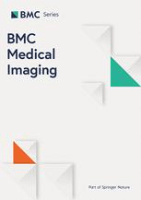
BMC MEDICAL IMAGING
Scope & Guideline
Empowering Researchers and Clinicians in Medical Imaging.
Introduction
Aims and Scopes
- Medical Image Analysis:
The journal emphasizes research that involves the analysis of medical images through various techniques, including radiomics, deep learning, and machine learning, to improve diagnostic accuracy and patient outcomes. - Multimodal Imaging Techniques:
Research published in this journal often explores the integration of multiple imaging modalities, such as MRI, CT, and ultrasound, to provide comprehensive insights into disease diagnosis and treatment planning. - Clinical Applications of Imaging:
BMC Medical Imaging aims to address the clinical relevance of imaging techniques, showcasing studies that demonstrate the practical applications of medical imaging in diagnosing, monitoring, and treating various diseases. - Innovative Imaging Technologies:
The journal highlights advancements in imaging technologies, including developments in MRI, CT, ultrasound, and hybrid imaging systems, along with novel methodologies for image acquisition and processing. - Artificial Intelligence in Imaging:
A significant focus of the journal is the application of artificial intelligence and machine learning in medical imaging, particularly in automating image analysis, enhancing image quality, and improving diagnostic workflows.
Trending and Emerging
- Radiomics and Biomarker Discovery:
There is a growing emphasis on radiomics, which involves extracting large amounts of quantitative features from medical images to develop predictive models and biomarkers for various diseases. - Artificial Intelligence and Machine Learning Applications:
The integration of AI and machine learning techniques in imaging studies is on the rise, focusing on automating image analysis, enhancing diagnostic accuracy, and personalizing patient care. - Deep Learning in Imaging Segmentation:
Deep learning approaches for segmentation tasks, particularly in complex anatomical structures and lesions, are increasingly prevalent, reflecting advancements in neural network architectures. - Telemedicine and Remote Imaging Solutions:
The COVID-19 pandemic has accelerated the research and implementation of telemedicine solutions, leading to an increase in studies focusing on remote imaging and diagnostics. - Patient-Centric Imaging Studies:
Emerging trends include a shift towards patient-centered research that evaluates the impact of imaging on patient outcomes, satisfaction, and the overall healthcare experience.
Declining or Waning
- Traditional Imaging Techniques:
There has been a notable decrease in studies focusing solely on traditional imaging techniques without integration of advanced methodologies, indicating a shift towards more innovative approaches. - Basic Image Processing Techniques:
Research centered around basic image processing methods has seen reduced prominence, as the field moves towards more complex and automated solutions driven by AI and machine learning. - Non-Quantitative Imaging Studies:
There is a decline in non-quantitative studies that do not utilize advanced analytical methods or metrics, reflecting a trend towards more data-driven and quantifiable research approaches. - Single-Modality Imaging Research:
Research focusing on single-modality imaging without exploring multimodal integration is becoming less frequent, as the advantages of comprehensive imaging strategies are increasingly recognized.
Similar Journals
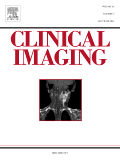
Clinical Imaging
Innovating Radiology Through Cutting-Edge ResearchClinical Imaging, published by Elsevier Science Inc, is a renowned journal dedicated to the field of radiology, nuclear medicine, and imaging. With an ISSN of 0899-7071 and an E-ISSN of 1873-4499, this esteemed publication has established its significance in advancing imaging science since its inception in 1989 and continues to make impactful contributions to the discipline through 2024. The journal holds a prestigious Q2 ranking in the category of Radiology, Nuclear Medicine, and Imaging, reflecting its critical role in bridging research and clinical practice. Currently ranked #113 out of 333 by Scopus, with a notable 66th percentile, it offers a platform for disseminating high-quality research, reviews, and case studies that inspire innovation and enhance imaging techniques. Although it primarily functions as a subscription-based journal, it remains dedicated to accessibility and the dissemination of pivotal findings that inform both academia and clinical settings. Clinical Imaging is essential for researchers, professionals, and students alike, offering insights that shape the future of diagnostic imaging.
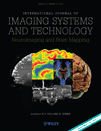
INTERNATIONAL JOURNAL OF IMAGING SYSTEMS AND TECHNOLOGY
Exploring the Frontiers of Imaging ScienceINTERNATIONAL JOURNAL OF IMAGING SYSTEMS AND TECHNOLOGY, published by Wiley, is a leading journal dedicated to advancing the field of imaging systems and technologies. With an ISSN of 0899-9457 and E-ISSN 1098-1098, this esteemed journal offers a platform for high-quality research spanning essential interdisciplinary areas, including Biomedical Engineering, Computer Science, and Health Informatics. Recognized for its impactful contributions, it holds a commendable position in the Q2 quartile across multiple categories as of 2023. The journal boasts an excellent Scopus ranking, with notable acknowledgments like rank #49 out of 333 in Radiology, Nuclear Medicine, and Imaging, showcasing its relevance and importance in the academic community. Publishes annually from 1989 to 2024, it aims to bridge gaps in knowledge and foster innovative developments through rigorous peer-reviewed articles. Though it operates under a traditional access model, the journal maintains an accessible repository of cutting-edge research, making it indispensable for researchers, professionals, and students alike seeking to stay at the forefront of imaging technology advancements.

European Radiology Experimental
Transforming Insights into Impactful Radiological PracticesEuropean Radiology Experimental is a premier open-access journal published by Springer Wien, dedicated to advancing the field of radiology through innovative research and experimentation. Since its establishment in 2017, the journal has quickly gained recognition, evidenced by its impressive Q1 ranking in the Radiology, Nuclear Medicine and Imaging category, and its placement within the top 83rd percentile of the Scopus rankings. Based in the United Kingdom, this journal aims to bridge the gap between clinical practice and cutting-edge research, providing a platform for rigorous peer-reviewed articles that explore new methodologies, technologies, and insights in radiological sciences. With a commitment to open access, European Radiology Experimental ensures that its content is readily accessible to a global audience, supporting the dissemination of knowledge and fostering collaborations among researchers, professionals, and students in the medical imaging community. As it progresses through its convergence years, the journal continues to play a vital role in shaping the future of radiological research and practice.

Chinese Journal of Academic Radiology
Transforming Radiology: Where Knowledge Meets InnovationChinese Journal of Academic Radiology is a leading publication in the field of Radiology, Nuclear Medicine, and Imaging, published by SpringerNature. With an ISSN of 2520-8985 and E-ISSN 2520-8993, the journal aims to bridge the gap between academic research and practical application in radiological sciences. Recognized for its contributions to the advancement of imaging technology and patient care, it currently holds a Q3 quartile ranking for 2023. The journal has a commitment to sharing innovative research findings that address pressing challenges in the field, thereby fostering collaboration and knowledge exchange among researchers, professionals, and students. Although it does not currently offer open access options, the journal's comprehensive reviews and high-quality research articles present a significant resource for those seeking to deepen their understanding of radiological practices and innovations. The Chinese Journal of Academic Radiology continues to play a vital role in shaping the future of radiological science through rigorous scholarship and global discourse.

International Journal of Biomedical Imaging
Fostering Collaboration in Biomedical Imaging AdvancesInternational Journal of Biomedical Imaging, published by HINDAWI LTD, stands as a pivotal resource in the field of biomedical imaging, bridging the gap between technological innovation and clinical application. Since its inception in 2006 as an Open Access journal, it has become accessible to a global audience, facilitating research dissemination and collaboration. The journal has garnered recognition within the academic community, achieving a notable Q2 category ranking in Radiology, Nuclear Medicine, and Imaging, with an impressive Scopus rank of 16 out of 333, placing it in the 95th percentile of its field. With coverage from 2006 to 2024, the journal encompasses a broad spectrum of studies focused on advancements in imaging technologies, methodologies, and clinical applications, making it an indispensable source for researchers, professionals, and students eager to stay at the forefront of biomedical imaging innovation.

EUROPEAN RADIOLOGY
Transforming Patient Care Through Cutting-Edge ImagingEUROPEAN RADIOLOGY, published by SPRINGER, stands as a prestigious international journal in the field of radiology, nuclear medicine, and imaging, with an impressive impact factor that underscores its significance among peers. With an ISSN of 0938-7994 and an E-ISSN of 1432-1084, this journal provides a platform for cutting-edge research and advancements in medical imaging from 1991 to 2024. Recognized as a Q1 journal in both general Medicine and the specialized Radiology category by 2023, EUROPEAN RADIOLOGY ranks an impressive #17 out of 333 in its field according to Scopus, placing it in the 95th percentile. While it does not currently offer Open Access options, the journal remains essential reading for researchers, professionals, and students striving to stay at the forefront of developments in diagnostic imaging and related technologies. By contributing to a comprehensive understanding of radiological practices, EUROPEAN RADIOLOGY plays a crucial role in shaping the future of medical diagnosis and patient care.
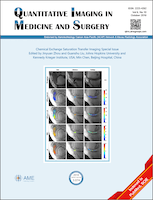
Quantitative Imaging in Medicine and Surgery
Pioneering Research in Quantitative Imaging ExcellenceQuantitative Imaging in Medicine and Surgery is an esteemed journal dedicated to advancing the field of medical imaging through rigorous research and innovative methodologies. Published by AME PUBLISHING COMPANY in China, this journal has established itself with an impressive Q2 quartile ranking in the field of Radiology, Nuclear Medicine, and Imaging, reflecting its dedication to high-quality research. With a comprehensive focus on quantitative imaging techniques, the journal covers a wide range of topics including image analysis, imaging biomarkers, and the integration of imaging in clinical practice, promoting collaboration between imaging specialists and clinicians. As an open access journal, Quantitative Imaging in Medicine and Surgery ensures that its articles are freely accessible, facilitating the dissemination of knowledge to a broader audience. With a commitment to fostering innovation in imaging science, this journal serves as an invaluable resource for researchers, professionals, and students alike, ultimately aiming to improve patient outcomes through advanced imaging strategies and technologies.
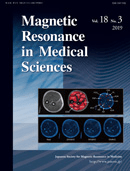
Magnetic Resonance in Medical Sciences
Transforming Diagnostics Through Innovative ResearchMagnetic Resonance in Medical Sciences is a leading open-access journal published by the Japanese Society of Magnetic Resonance Medicine, dedicated to advancing the field of medical imaging through high-quality research articles and reviews. With a strong focus on radiology, nuclear medicine, and imaging technologies, this journal serves as a crucial platform for the dissemination of innovative studies, as evidenced by its impressive Scopus ranking of #75 in its category and a commendable 77th percentile standing. Since its inception in 2002 and becoming open access in 2016, it has fostered a collaborative research environment, welcoming contributions from both seasoned experts and emerging scholars alike. The journal's commitment to enhancing diagnostic techniques and patient outcomes makes it an invaluable resource for researchers, healthcare professionals, and students passionate about the transformative potential of magnetic resonance imaging. Located in Tokyo, Japan, Magnetic Resonance in Medical Sciences continues to shape the future of medical imaging through rigorous scholarship and impactful research.

Radiological Physics and Technology
Advancing knowledge in radiological science.Radiological Physics and Technology, published by SPRINGER JAPAN KK, is a prominent journal that serves as a crucial resource in the multidisciplinary fields of medicine and radiation sciences. With an ISSN of 1865-0333 and an E-ISSN of 1865-0341, the journal has been converging impactful research from 2008 to 2024. It holds a commendable position in academic rankings, currently classified in Q2 in Physical Therapy, Sports Therapy and Rehabilitation and Radiation, along with Q3 for Medicine (miscellaneous) and Radiology, Nuclear Medicine and Imaging. The journal is well-regarded in the academic community, reflected in its Scopus rankings that place it in the upper tiers of its respective categories. Although it currently does not offer Open Access, Radiological Physics and Technology remains a pivotal publication for researchers, academics, and practitioners seeking to advance knowledge and foster innovation in radiological science. Its commitment to disseminating high-quality research ensures its continued relevance and importance within these fields.

Current Medical Imaging
Advancing Clinical Practice Through Innovative ImagingCurrent Medical Imaging is a reputable journal published by Bentham Science Publishers, specializing in the dynamic field of medical imaging, with a strong emphasis on both clinical applications and technological advancements. Established in 2007, the journal has made significant contributions to the fields of Internal Medicine and Radiology, consistently ranking in the Q3 quartile for these categories as of 2023. The journal's ISSN 1573-4056 and E-ISSN 1875-6603 ensure wide accessibility for scholarly communication, although it operates under a traditional access model. With its continuous publication from 2011 to 2024, Current Medical Imaging aims to bridge the gap between advanced imaging techniques and their practical application in patient care, making it indispensable for researchers, healthcare professionals, and students eager to stay at the forefront of innovations in imaging technology and clinical practice.